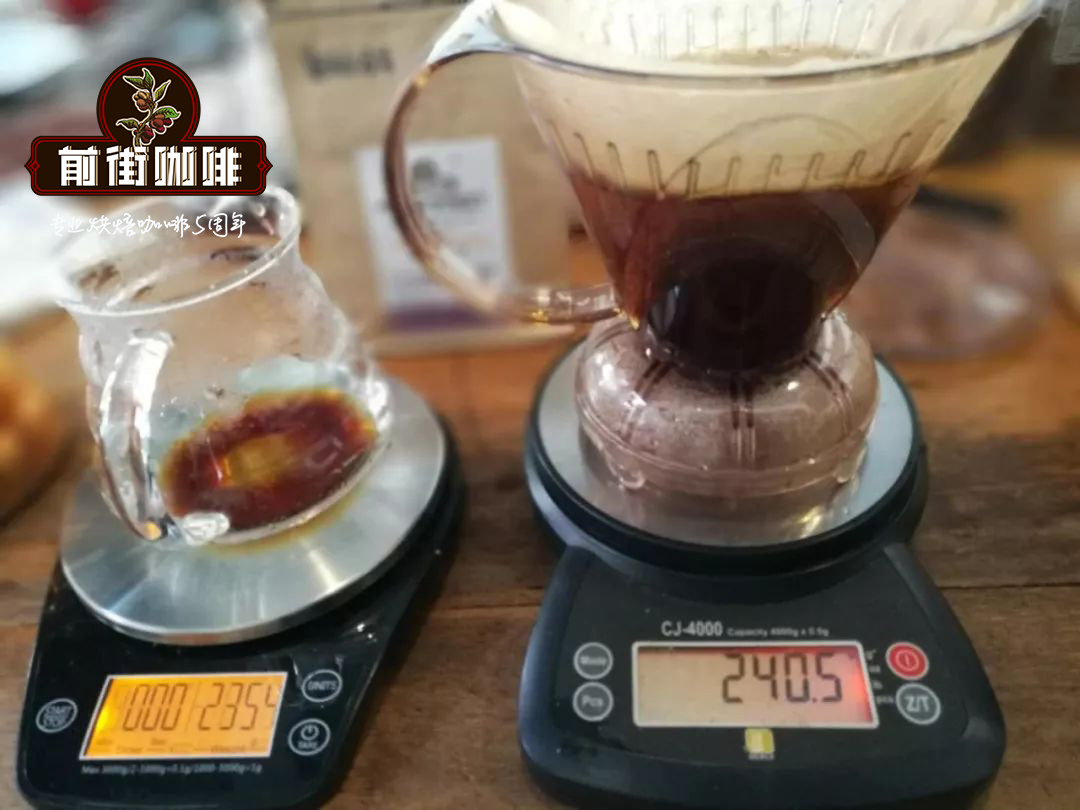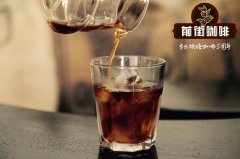How to brew coffee beans from Ali Mento Farm in Brazil _ how to taste coffee made by hand Syrador?

Professional coffee knowledge exchange more coffee bean information please follow the coffee workshop (Wechat official account cafe_style)
Brazilian coffee generally refers to coffee produced in Brazil. There is a wide variety of Brazilian coffee, the vast majority of which are unwashed and sun-dried, classified according to the name of the state of origin and the port of transport. Brazil has 21 states and 17 states produce coffee, but four of them produce the largest, accounting for 98% of the country's total output. The taste of Brazilian coffee has a low sour taste, with the sweet and bitter taste of coffee, the entrance is very smooth, but also with a hint of grass aroma, slightly bitter in the fragrance, smooth and smooth, with a pleasant aftertaste.
Although coffee is diverse, Brazilian coffee is suitable for the taste of the public. For example, coffee produced in the northern coastal areas has a typical iodine taste, reminiscent of the sea after drinking. This coffee is exported to North America, the Middle East and Eastern Europe. Another kind of coffee that is interesting and worth looking for is washed Bahia coffee. This kind of coffee is not easy to find because Brazil is the world's largest consumer of coffee after the United States, and many of the best coffee can only be found in its domestic market.
In Brazil, the largest producer is Robbins. This kind of coffee is sold in the supermarket. Brazil's Robucht coffee, sold under the name Conillon, accounts for 15 per cent of total production.
Old bourbon coffee is grown on some estates in the Serrado district of Minas Greais state in southeastern Brazil. Old varieties of bourbon coffee grown on these estates, such as Capin Branco and Vista Allegre, are also sold on the market. Although they come from the same area, these coffees have their own characteristics. Capingblanco coffee is smoother than Vesta Allegre coffee, while Vesta Allegre coffee is strong and black, both of which have lower acidity. However, like all Brazilian coffee, they are most suitable for drinking when they are fresh and tender, because the older they are, the more acidic they are. These coffee growers have organized themselves into the Brazilian Special Coffee Association (the Speciality Coffee Association of Brazil).
Brazil (Santos) Syrador Ali Mento Farm
Santos Coffee (Santos Coffee): mainly produced in Sao Paulo, Brazil. This kind of coffee acid, sweet and bitter is neutral, moderate concentration, with moderate sour taste, elegant and special taste, is the best blending beans, known as the strong coffee, but the taste is also good.
Producing area: Syrador
Name of the manor: Ali Mento
Harvest time: June-August
Grade: NY.2
Variety: Catuai,Acaia,Mundo Novo
Planting height: 900m-1000m
Processing method: tanning type
Moisture content: 12.7%
Recommended baking degree: City,FullCity
Aroma characteristics: Good acidity,nuances of citrus,nutty,Sweetness,Clean Cup,Good Balance.
Established in 1974, Alimentos Farm, as a company that distributes 3% of Brazilian coffee, is a farm and exporter of high-quality coffee to Japan, the United States, Europe and other places. The management center, located in S ã o Paulo, has more than 800 employees and more than 200 coffee vehicles. Alimentos Farm is located between 900m and 1000m above sea level, growing many varieties of coffee, such as Catuai and lcatu. Syrador is famous for its taste in Brazilian coffee, full of citrus, nutty acidity and bright citrus taste. In addition, Alimentos coffee is famous for its thorough quality management, production and export of high-quality boutique coffee.
Qianjie cooking parameters are suggested:
How to make Brazilian coffee [Arimento Farm Solar Syrador]?
Qianjie Coffee hand Chong reference: weigh 15g [Ali Mentuo Farm Sun Hilado] coffee powder, pour into the grinder for medium grinding, the finished particles are slightly thicker than salt, we use BG bean grinder to scale 6A (standard sieve pass rate 50%), water temperature 88 degrees, kono/kalita filter cup extraction, recommended powder ratio around 1:14.
The hot water in the hand flushing pot draws a circle clockwise with the center of the filter cup. Start the time when brewing, brew the coffee to 30g in 15 seconds, then stop the water injection, and when the time is up to 1 minute, the second water injection. The second water injection is the same as before, draw a circle clockwise with the center of the filter cup, and the water flow should not rush to the place where the coffee powder is connected with the filter paper, so as not to produce channel effect.
Coffee powder to the outermost circle to set aside a circle, and then another circle to the middle, 2 minutes 10 seconds, to the coffee to 210g, brewing coffee is finished.
| Japanese Ice hand Chong [Arimentuo Farm Solar Syrador]
Qianjie Coffee Ice hand [Arimento Farm Solar Syrador] reference:
Brazilian coffee [Arimento Farm Solar Syrador], medium and deep roasted, BG bean grinder scale 5R (standard sieve pass rate 60%)
20 grams of powder, 150 grams of ice, 150 grams of hot water. The water temperature is 88 ℃ higher than the recommended normal hand flush, then 1 ℃ higher, the normal grinding small Fuji 3.5 scale, the ice hand flushing is slightly smaller than half a grid-small Fuji 3 scale, the recommended powder (water + ice) ratio is 1:15.
The amount of steaming water is 40 grams and the steaming time is 30 seconds.
Water injection by stages, 60 grams of water in the first section and 40 grams of water in the second section. Use a thin but high water injection column and stir hard to make the coffee powder fully tumble, but be careful that the water level is not too high and do not rush to the edge of the filter paper.
The whole extraction time is about two and a half minutes (close to the normal extraction time of 20 grams of powder).
END
Important Notice :
前街咖啡 FrontStreet Coffee has moved to new addredd:
FrontStreet Coffee Address: 315,Donghua East Road,GuangZhou
Tel:020 38364473
- Prev

Brazilian Diamantina Valley Coffee how to make coffee by hand _ Brazilian hand coffee how to buy coffee beans
Professional coffee knowledge exchange more coffee bean information please follow the coffee workshop (Wechat official account cafe_style) Brazil Diamantina Valley Coffee is produced in the tropical plateau ecological region of Sheilado. It is a classic mild Brazilian coffee with the lowest acidity, moderately balanced taste and unique sweetness. Cup Review: an excellent coffee with sour red wine tone and sweet fruit taste.
- Next

How to make coffee by hand in Aguafera, Brazil? what if it is too bitter to make coffee by hand?
Professional coffee knowledge exchange more coffee bean information please follow the coffee workshop (Wechat official account cafe_style) Brazil Sitio Agua Fria sun treatment | medium baking | bourbon Stio Agua Fria is very unique in the region, with an average elevation of 1320 meters above sea level. The first batch of coffee actually grew in the wild. The oldest coffee trees on this farm can be traced back to
Related
- Detailed explanation of Jadeite planting Land in Panamanian Jadeite Manor introduction to the grading system of Jadeite competitive bidding, Red bid, Green bid and Rose Summer
- Story of Coffee planting in Brenka region of Costa Rica Stonehenge Manor anaerobic heavy honey treatment of flavor mouth
- What's on the barrel of Blue Mountain Coffee beans?
- Can American coffee also pull flowers? How to use hot American style to pull out a good-looking pattern?
- Can you make a cold extract with coffee beans? What is the right proportion for cold-extracted coffee formula?
- Indonesian PWN Gold Mandrine Coffee Origin Features Flavor How to Chong? Mandolin coffee is American.
- A brief introduction to the flavor characteristics of Brazilian yellow bourbon coffee beans
- What is the effect of different water quality on the flavor of cold-extracted coffee? What kind of water is best for brewing coffee?
- Why do you think of Rose Summer whenever you mention Panamanian coffee?
- Introduction to the characteristics of authentic blue mountain coffee bean producing areas? What is the CIB Coffee Authority in Jamaica?

